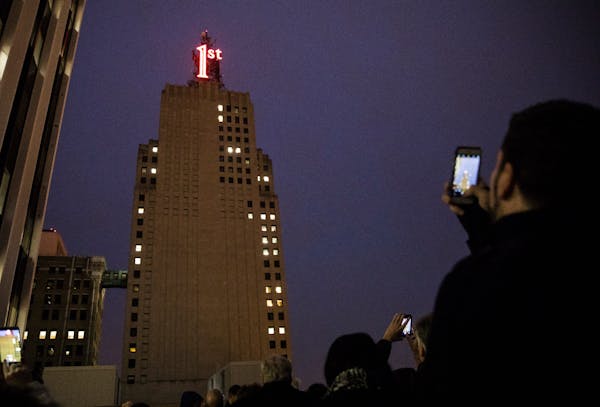DFL candidate for governor Margaret Anderson Kelliher is out to make history this year, and I'm not talking about gender.
Only one previous sitting speaker of the Minnesota House -- William R. Merriam in 1888 -- made the leap from one part of the Capitol to another that Kelliher is attempting in 2010. (Hold your e-mails, history buffs: Yes, Gov. Samuel Van Sant also served as House speaker. But when he was elected governor in 1900, he'd been out of the speaker's chair for four years.)
The move Kelliher is contemplating is rare. And, I'll claim, difficult. If it were not so, it's a good bet that the roster of House speakers would include more of the names now engraved on the plaques next to portraits in the Capitol corridors.
The political perils of the transition Kelliher contemplates might not be obvious. Clearly, House speakers have some advantages as they try to move up. They possess statewide connections and perspective, leadership skills and knowledge of the issues. They can usually count on an influential base of support -- their fellow legislators, or, in DFL convention parlance, "auto-delegates."
But speakers also are masters of intricate legislative processes who tend to speak in terms of bills introduced, hearings held and deals struck. Their jargon sails over many voters' heads.
Speakers are balancers of myriad interests and egos and can't possibly satisfy all of them. They develop the habit of caution and incrementalism. They cast thousands of votes that can be sliced and diced to opponents' advantage.
If a speaker takes governing seriously, he or she must make compromises. Governing can require painful reaches in the direction of the opposite party. Those big stretches are seldom applauded by one's partisan base.
And because a speaker is only the second-most-powerful person in state government, he or she is subject to being bowled over by the most-powerful person.
As Kelliher learned in 2009, it's hard to look gubernatorial when one has just been flattened by the governor. Critics still snipe that she could have done something to stop Gov. Tim Pawlenty's unilateral (and legally questionable) budget cuts last year. Those critics gloss over a governor's systemic superiority when a speaker lacks the votes to override a veto. One way or another -- by veto or unallotment -- as long as House Republicans stayed with him, Pawlenty was eventually going to get his way.
Against that backdrop -- plus a fundraising misstep that resulted in a Campaign Finance Board fine and scolding last month -- Kelliher's close second-place finish in last Tuesday's precinct caucus straw poll ranks as an achievement. In a large field, only Minneapolis Mayor R.T. Rybak had a better showing in the nonbinding vote.
When I caught up with Kelliher the morning after, she downplayed the minuses and talked up the pluses of running for governor while leading the House.
She won't need on-the-job training about state government, she noted. She's spent the last few campaign cycles traveling the state. She's habituated to equitable treatment of all of its regions. "I understand what people need in Frazee and what people need in Fridley."
But her best advantage in her party's endorsement race may be a speaker's power to control the pace and flow of lawmaking.
For the first time in modern times, the major parties' gubernatorial endorsing conventions will take place while a legislative session is in progress. That means that in the runup to the convention, she'll be very visible. She can be the face of the DFL opposition to Pawlenty proposals her party faithful don't like.
She's well-positioned to keep the House focused on the job-promoting measures that Minnesotans want, while putting off the messier matter of closing a $1.2 billion budget deficit until after the April 23-25 convention. Her candidacy is a main reason none of us in the Capitol's cheap seats is betting that this session will finish early.
When the time for hard bargaining comes at the Capitol, Kelliher said, she intends to demonstrate that she's "someone who can represent the values people care about, but who can also move things forward."
By then, the primary campaign will have begun in earnest. If she remains in the running for governor then, she'll be hoping that primary voters are looking for someone who hasn't just been talking about governing Minnesota for the past few years, but doing it.
By the way, history indicates that Kelliher is not the only DFLer trying to make a rare and treacherous jump from a current elective office to the governorship. The last mayor of Minneapolis or St. Paul elected governor? Alexander Ramsey in 1859 -- and he'd been out of the mayor's office for three years.
Lori Sturdevant, an editorial writer and columnist, is at lsturdevant@startribune.com.

As a topic among policymakers, housing is hotter than it once was
Worries about the U faded in search for new president


